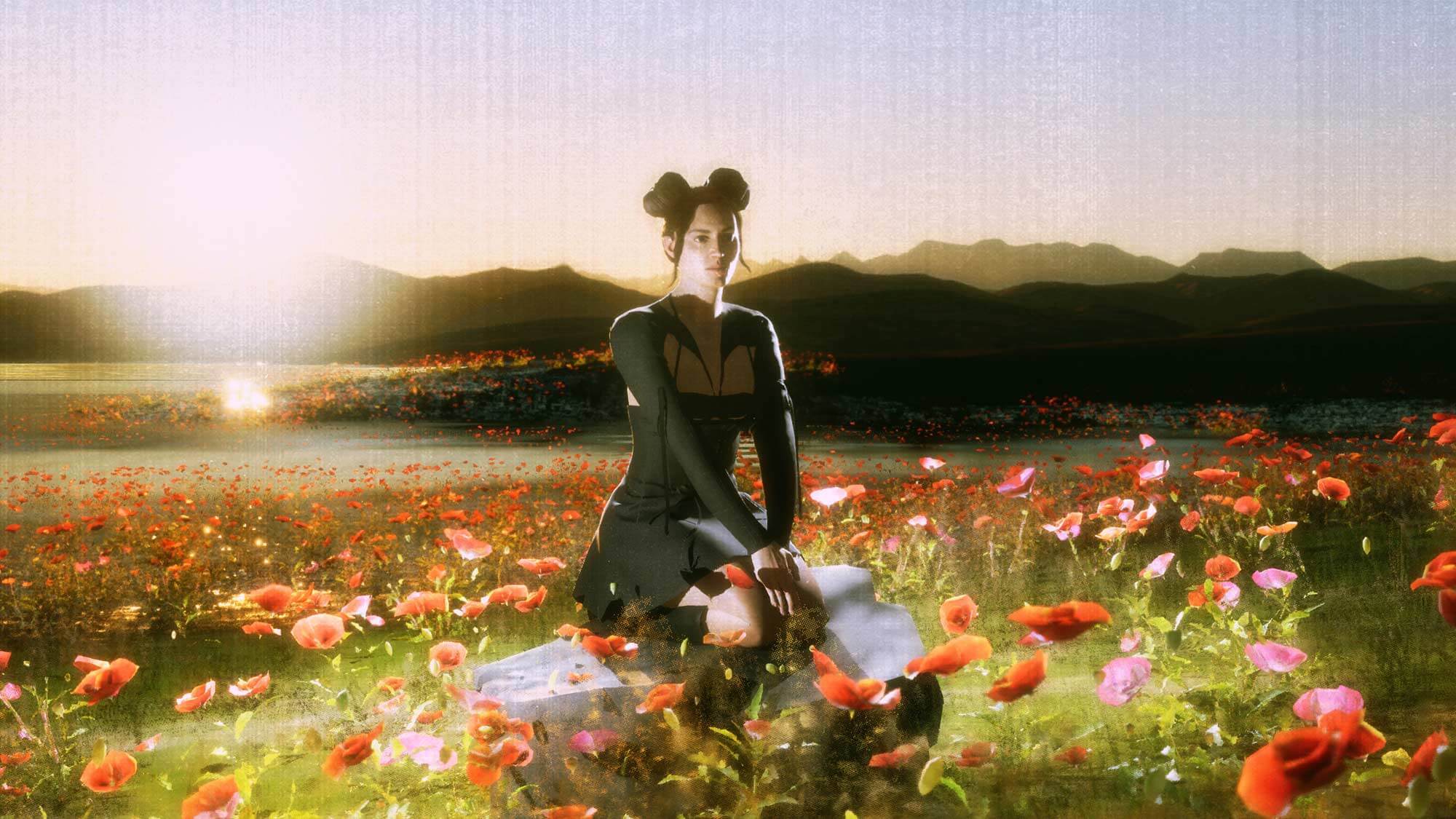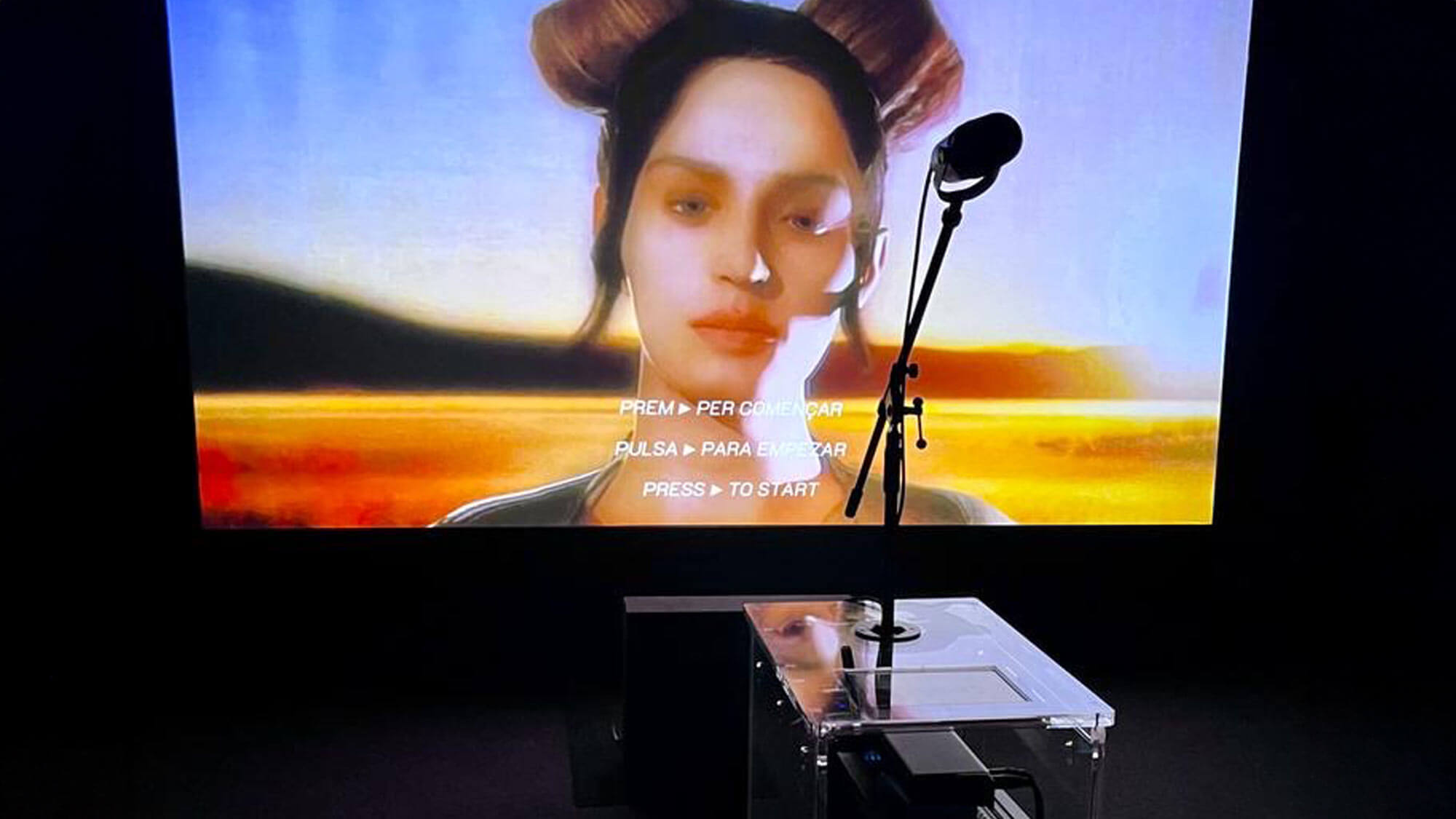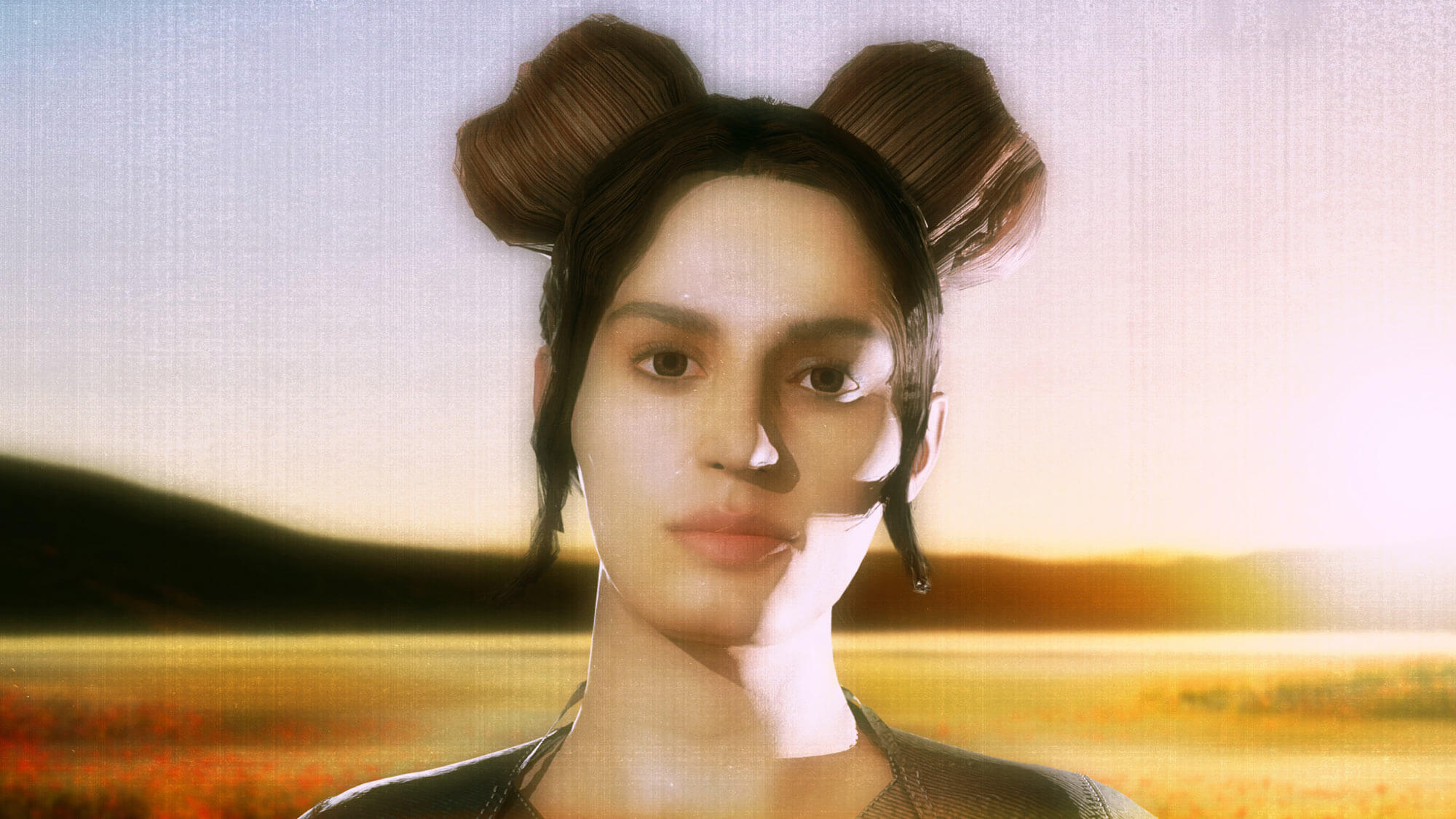Honorary Mention
mariaarnalmusic.com/Maria-CHOIR
Maria CHOIR is an immersive human-AI musical installation that invites participants to explore the boundaries of singing and listening through real-time interaction with an AI. This artwork leverages a model trained on the voice of singer Maria Arnal, enabling a unique duet between visitor and AI that evolves with each interaction, becoming a choir. Set within a dark, intimate space, the installation features a transparent plinth revealing its inner workings, surrounded by speakers that envelop participants in a rich tapestry of sound. An AI-animated avatar guides users, morphing in response to their vocal inputs, creating a personalized, dynamic experience.
Maria CHOIR is not just an artistic experiment but a social experience on novel AI musical live tools, collective datasets, consent, and the potential of synthetic voices to extend beyond mere replication of human capabilities. Furthermore, it invites participants to contribute to a collective voice model, used for both artistic creation and research, emphasizing the project’s commitment to ethical engagement and transparency as well as fostering a powerful connection between humans and non-humans.
Having attracted over 112,000 visitors at the AI: Artificial Intelligence exhibition at CCCB, Barcelona, and recorded over 12,400 voices, Maria CHOIR stands as a testament to its public appeal and research significance. The project showcases the collaborative effort of artists, scientists, and technologists.
Maria CHOIR, led by Maria Arnal, blends human and synthetic voices in live conferences, exploring new vocal narratives. As a complementary activation of the installation, these events demystify AI technology, fostering communal creativity and reflecting on AI-explainability through music. This pioneer project sets the stage for further exploration of human-AI interaction, real-time voice neural synthesis, awareness on the creation of collective datasets and the ethical dimensions of AI in art, solidifying Maria Arnal’s status as a symbol of contemporary innovation in European art.
Credits
Concept, direction and music production: Maria Arnal
Funding and support: Fundación Española de Ciencia y Tecnología (FECYT)
Technical execution and programming: Barcelona Supercomputer Center (BSC), axolot.cat (Iván Paz and Lina Bautista)
Interactive design: axolot.cat (Iván Paz and Lina Bautista)
Visuals and artistic design: JP Bonino
Curator: Lluís Nacenta
Host and exhibition space: Centre de Cultura Contemporània de Barcelona (CCCB)
With support from: Fundación Española de Ciencia y Tecnología (FECYT)
Biographies
Maria Arnal Dimas (ES) is a Barcelona-based artist, singer, and composer, renowned for her unique blend of avant-garde pop, electronics, and traditional polyphonic music. Her work is distinguished by an exploratory spirit of sound, technology, and art. During the last years, she has been widely recognized with numerous awards and has performed at some of the most iconic festivals, such as Sónar Festival or the TED-Talks event in Vancouver, among others. Arnal’s diverse projects span compositions like AIR for the Venice Architecture Biennale 2021 and SIRENA for Hipermirador Torre Glòries 2022. She co-directs the sound essay “Cada capa de l’Atmosfera” (2023), exploring sonic consciousness in the climate emergency, and pioneers Maria CHOIR (CCCB 2024) an interactive human-AI sound installation. Currently, she’s engaged in research on synthetic voices in collaboration with the Barcelona Supercomputing Center and she is composing her next album, marking her debut full-length solo release.
Jury Statement
Music has historically been an integral part of our societies, shaping one another in the most creative ways. As we are today confronted with one of the most ambiguous technologies, AI, music provides an opportunity to culturalize its influence on society. Maria CHOIR musical installation is an example of a human-AI built as a shared experience of 11,000 participants contributing their voice to one of the largest choirs performing at a single event. Such a process demonstrated an AI model-learning process as a public event, providing insight into otherwise mystifying processes, with researchers often claiming that even they don’t understand how AI learns and functions. Carrying out research and the development of new technologies in public enhances the societal relevance of these technologies. And though this project sets a new standard for innovative collaborations, it also spotlights the resources required, such as a supercomputing center, a creative coding collective, and a cultural platform.







